20 Full-Sun Annuals That Will Add Color to Your Garden
These flowers—including many that can tolerate heat and drought—will thrive in gardens without shade.
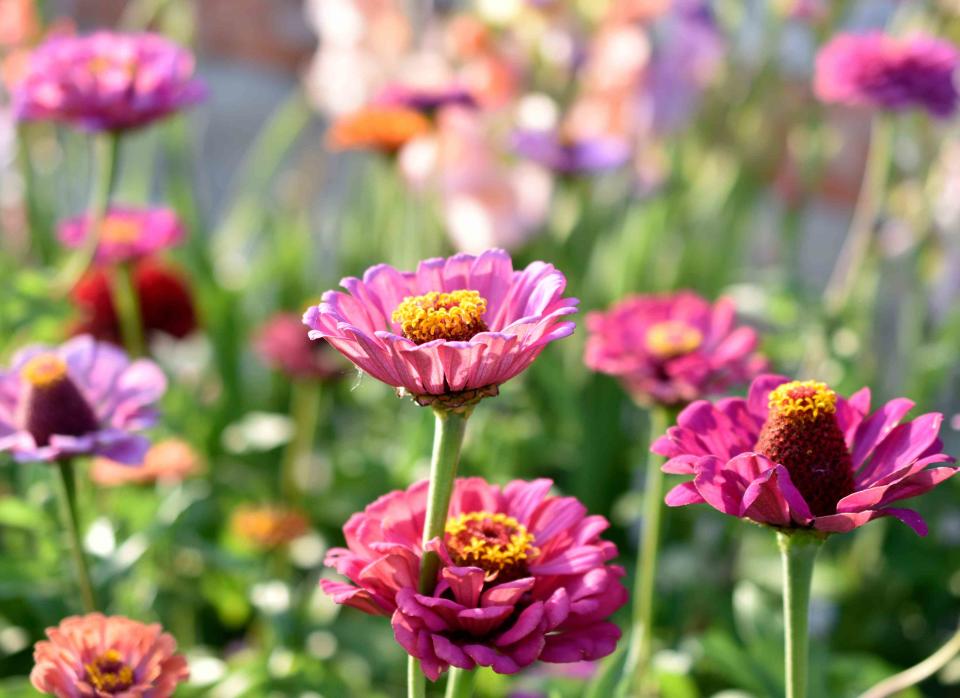
Valeriy Lushchikov / Getty Images
Annual flowers are known for their showy blooms that bring season-long color to yards and gardens. While some varieties need protection from the sun's intensity, others luxuriate under it. Here, we're sharing expert-approved annual flowers that thrive in full sun all day long. In addition to being sun lovers, many of the species on this list are heat- and drought-tolerant—and their bright blooms welcome pollinators like bees and butterflies to your garden.
Meet the Expert
Justin Hancock, horticulturist for Costa Farms
Parker Garlitz, managing partner at True Leaf Market
Related: 13 Full-Sun Spring Perennials to Plant for a Gorgeous Flower Garden
Snapdragons
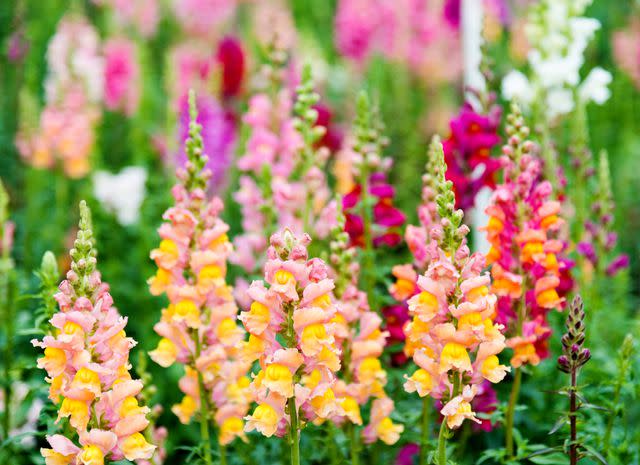
baona / Getty Images
Snapdragon (Antirrhinum) is a tried-and-true annual flower that comes in a wide range of colors, including pink, purple, red, orange, and yellow. It earned its name because each individual flower looks like a dragon’s face, and it snaps open and shut when you gently grip and let go of the back of the flower. "It grows best in all-day sun but tolerates a bit of afternoon shade," says Justin Hancock, horticulturist for Costa Farms.
Zones: 7 to 11
Size: 1 to 3 feet tall x 6 to 18 inches wide
Care requirements: full sun; well-draining soil rich in organic matter
Angelonia
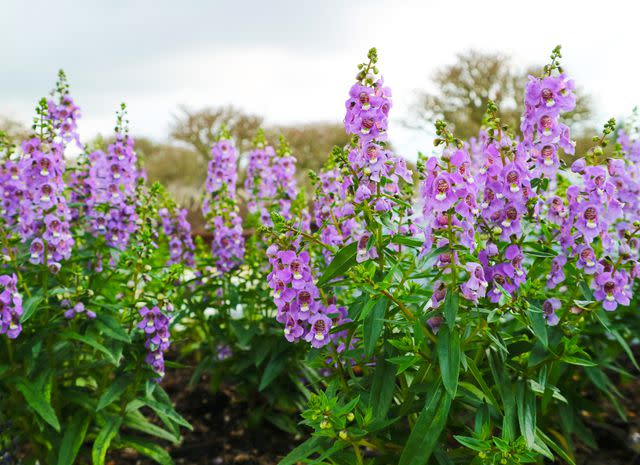
Chayanan / Getty Images
Angelonia produces beautiful upright spikes of flowers, reminiscent of snapdragons. "This heat-loving and drought-tolerant plant is a top choice for hot summer gardens and shows off blue, purple, pink, or white blooms, no matter how hot the weather gets," says Hancock. Some varieties of this sun-loving plant are pleasantly fragrant.
Zones: 10 to 13
Size: 12 to 24 inches tall x 12 to 18 inches wide
Care requirements: full sun; well-draining soil rich in organic matter
Love-in-a-Mist
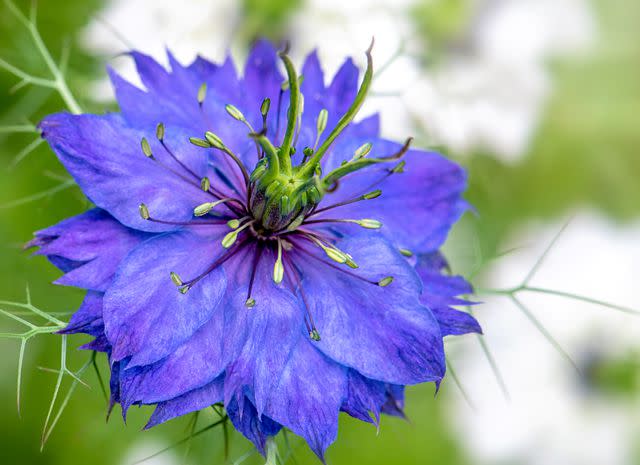
Jacky Parker Photography / Getty Images
Love-in-a-Mist (Nigella) is an old-school annual that produces a mound of almost ferny foliage topped by intricate flowers in shades of blue, purple, white, and rose. "After the flowers fade, they form balloon-like seedpods that add additional interest," says Hancock. "It doesn’t require deadheading, though removing flowers as they fade will extend the bloom season." If you don't deadhead, this flower can self-sow and sprout again next spring.
Zones: 2 to 11
Size: 15 to 24 inches tall x 24 inches wide
Care requirements: full sun; well-draining soil rich in organic matter
Larkspur
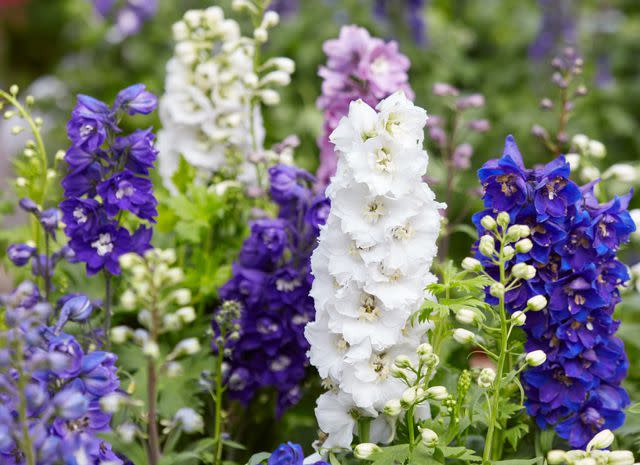
AndreaAstes / Getty Images
The true-blue flowers of Larkspur (Consolida) add beautiful color to any garden. "It’s a cool-season annual that produces lovely spikes of flowers that add texture and vertical interest to the garden," says Hancock. "It’s attractive to bees and butterflies, too." As a cool-season annual, it usually declines by midsummer in most areas.
Zones: 2 to 11
Size: 36 inches tall x 30 inches wide
Care requirements: full sun; well-draining soil rich in organic matter
Nasturtium
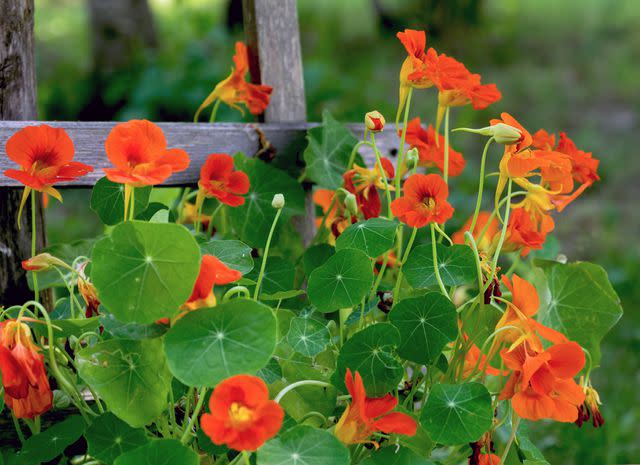
Pakhomov Andrey / Getty Images
Nasturtium produces papery blooms of canary, peach, carmine, or salmon colored blooms atop lush greens. "Nasturtiums perform best in poor soils," says Parker Garlitz, managing partner at True Leaf Market. "Avoid fertilizing, as this will encourage foliage production rather than blooms. Deadheading is not needed, but occasional trimming may help control overgrown foliage for a more manicured appearance."
Zones: 2 to 11
Size: 12 to 18 inches tall x 12 to 24 inches wide
Care requirements: full sun to partial shade; moist, rich, well-draining soil
Spider Flower
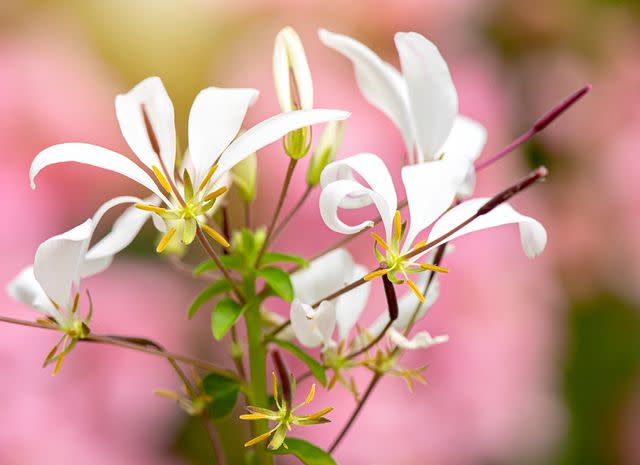
Jacky Parker Photography / Getty Images
Spider flower (Cleome), with its dark-green foliage and spikes of colorful blooms, looks beautiful in cottage gardens. This sun-loving plant produces flowers until your area's first frost. "The flowers attract butterflies and hummingbirds (as well as hummingbird moths)," says Hancock. "It has a tendency to self-sow, meaning the seeds drop in the soil and sprout fresh the next spring."
Zones: 2 to 11
Size: 3 to 6 feet tall x 1 to 2 feet wide
Care requirements: full sun; well-draining soil rich in organic matter
Petunia
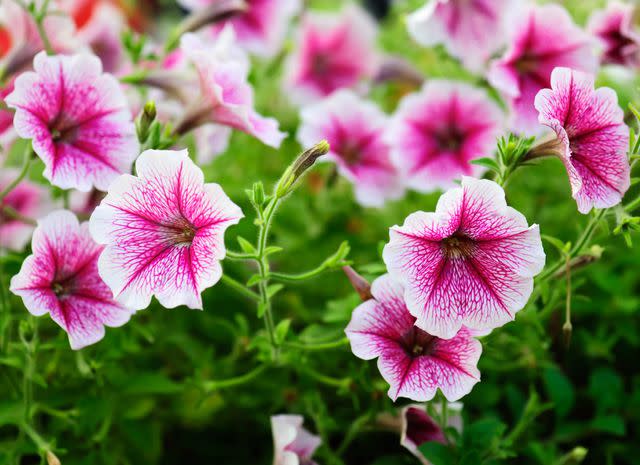
kuarmungadd / Getty Images
Petunia is one of the most sold annuals across the country. "It's appreciated for its large, trumpet-shaped blooms that appear in just about every color you could hope for (including black and chartreuse)," says Hancock. "Many are fragrant and attract pollinators like butterflies and hummingbirds, too."
Zones: 2 to 11
Size: 1 to 3 feet tall x 1 to 4 feet wide
Care requirements: full sun to part shade; moist, well-draining soil rich in organic matter
Calibrachoa
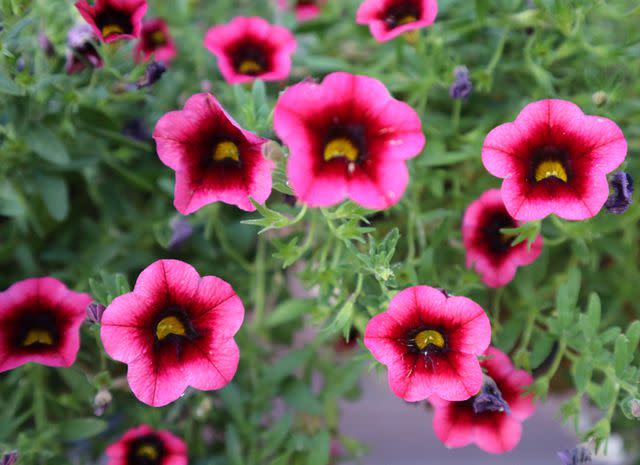
Wirestock / Getty Images
A relative of petunia, calibrachoa shows off similar trumpet-shaped flowers that are usually smaller and a little thicker, so they hold up better after a heavy rain. "Most calibrachoa have a mounding or trailing habit, making them top picks for hanging baskets," says Hancock. "They’re incredibly versatile because they come in just about every color."
Zones: 2 to 11
Size: 2 feet tall x 1 to 2 feet wide
Care requirements: full sun to part shade; well-draining soil rich in organic matter
Ornamental Pepper

Diane Labombarbe / Getty Images
Ornamental pepper (Capsicum) is a sister of the peppers commonly grown in vegetable gardens. "While the edible varieties are grown for their flavors, ornamental peppers are grown for their looks," says Hancock. "There’s a wide variety of shapes and colors, but one of my favorites is Black Pearl, which shows off dark, purple-green leaves, small purple star-shaped flowers, and sphere-shaped purple fruits that mature to bright red."
Zones: 2 to 11
Size: 24 inches tall x 18 inches wide
Care requirements: full sun; well-draining soil rich in organic matter
Zinnia
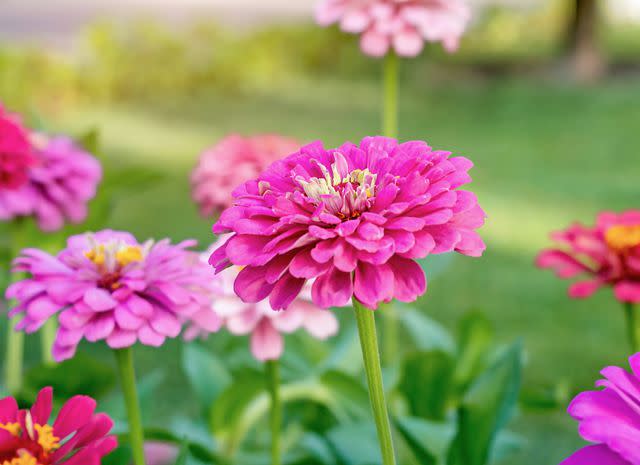
Ildar Imashev / Getty Images
Zinnias are prolific bloomers that have attractive single, double, or semi-double blooms in a variety of vibrant colors. "Zinnias are known to tolerate drought once established and attract pollinators," says Garlitz. Spent flowers should be deadheaded to encourage continuous blooms."
Zones: 3 to 10
Size: 12 to 36 inches tall x 8 to 10 inches wide
Care requirements: full sun; well-draining soil
Vinca

ViniSouza128 / Getty Images
Vinca (Catharanthus) is a heat- and drought-tolerant plant that's beloved by bees. "It shows off delightful pinwheel-shaped flowers in a wide variety of colors, from classic white through all shades of coral, pink, and red, as well as lavender," says Hancock. It can grow in any zone as an annual, but it will grow as a year-round-flowering perennial in Zones 10 and warmer.
Zones: 2 to 11
Size: 3 feet tall x 3 feet wide
Care requirements: full sun; well-draining soil
Pentas
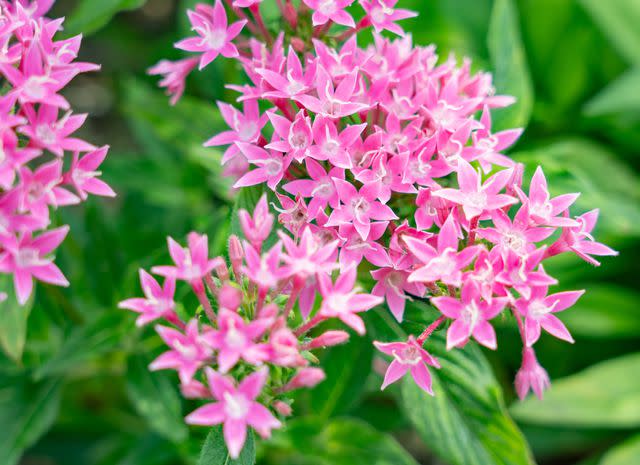
okimo / Getty Images
Pentas is a tried-and-true annual you can count on to thrive all summer long. "Pentas produces colorful clusters of small star-like flowers primarily in shades of red, pink, lavender, and white," says Hancock. "The flowers are a favorite of many pollinators, including butterflies and hummingbirds."
Zones: 2 to 11
Size: 4 feet tall x 4 feet wide
Care requirements: full sun; well-draining soil
Crossandra
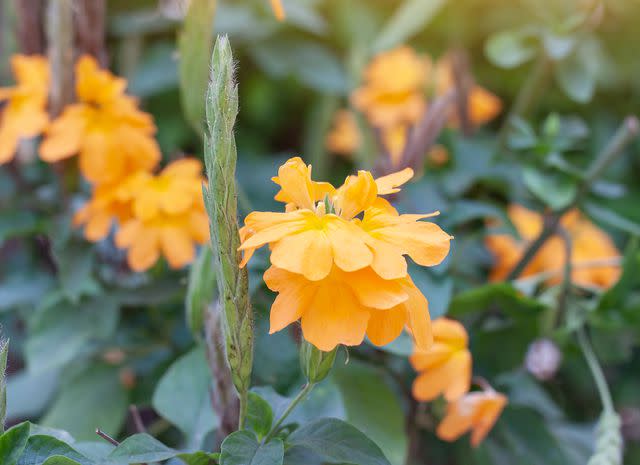
Pannarai Nak-im / Getty Images
Crossandra loves summer heat and humidity, making it a top pick for warm climates. "It has glossy, dark green foliage and is topped by clusters of apricot-orange flowers that attract bees, butterflies and hummingbirds," says Hancock. While it can tolerate partial shade, it won't bloom as prolifically as it would in full sun.
Zones: 2 to 11
Size: 30 inches tall x 30 inches wide
Care requirements: full sun; well-draining soil
Gerbera
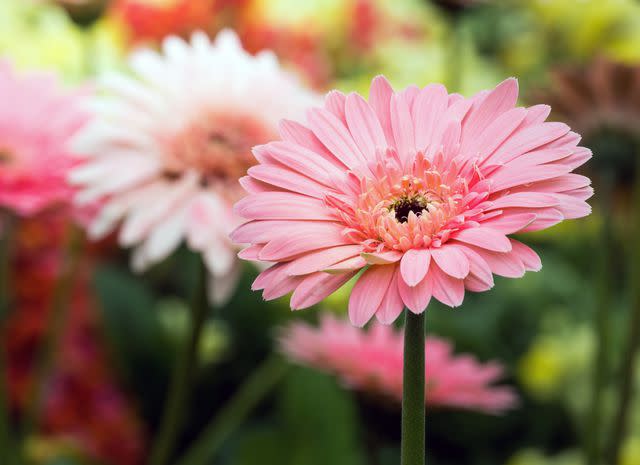
Crazybboy / Getty Images
Gerbera is easy to love for its profusion of graceful daisy-like flowers. There are a lot of hybrids, but the Garvinea series offers some of the best for the garden and produce a profusion of long-stemmed daisy-shaped flowers in white, pink, purple, red, and yellow, says Hancock. The flowers are excellent for cutting for bouquets.
Zones: 8 to 11
Size: 20 inches tall x 20 inches wide
Care requirements: full sun; well-draining soil
Mandevilla

RiverNorthPhotography / Getty Images
Mandevilla (Mandevilla) is a tropical plant that is typically available in shades of red, pink, and white. It's a climbing variety that looks beautiful trailing up trellises, fences, pergolas, and other garden structures.
Zones: 9 to 11
Size: Depends on variety
Care requirements: full sun; well-draining soil
Lobelia
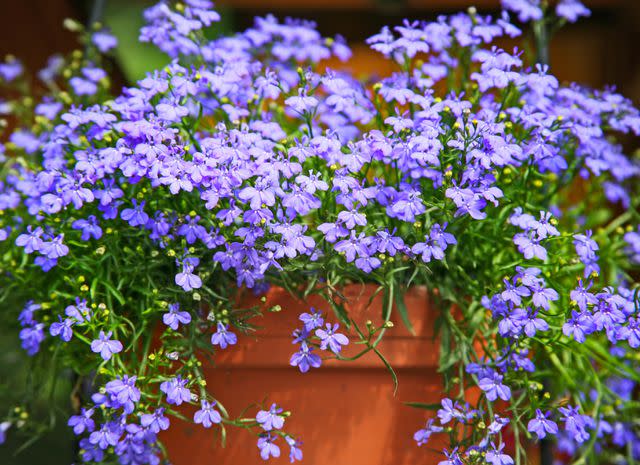
LailaRberg / Getty Images
Lobelia is great for growing in the garden and in containers. "It’s decorated by sprays of small blue, purple, white, or pink flowers all spring and into summer (or through fall, depending on how hot your climate is)," says Hancock. This creates a lovely soft texture, making it a perfect companion to other annuals." In cool-weather climates, all-day sun is fine, but in hotter regions, a little afternoon shade is ideal.
Zones: 2 to 11
Size: 12 inches tall x 12 inches wide
Care requirements: full sun to partial shade; well-draining soil rich in organic matter
African Daisy
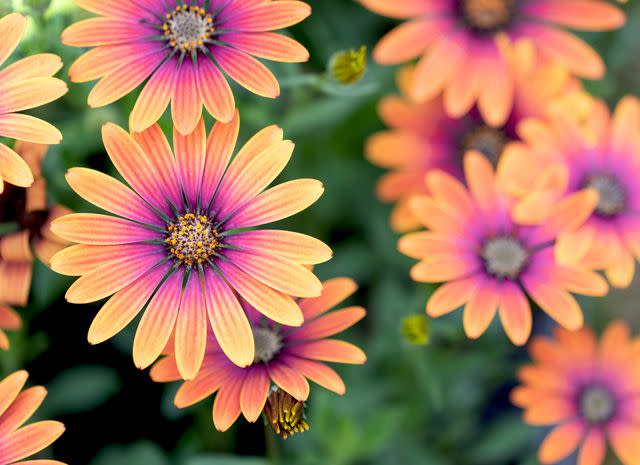
Paolo Carnassale / Getty Images
African daisies (Osteospermum) are relatively low maintenance and thrive in areas where they receive about six to eight hours of full sun. They have unique white and purple daisy-type flowers that look beautiful in garden beds. "Spent flowers should be deadheaded to encourage more blooms," says Garlitz.
Zones: 1 to 11
Size: 18 to 24 inches tall x 16 to 20 inches wide
Care requirements: full sun to partial shade; well-draining soil with a neutral to slightly acidic pH
Floss Flower
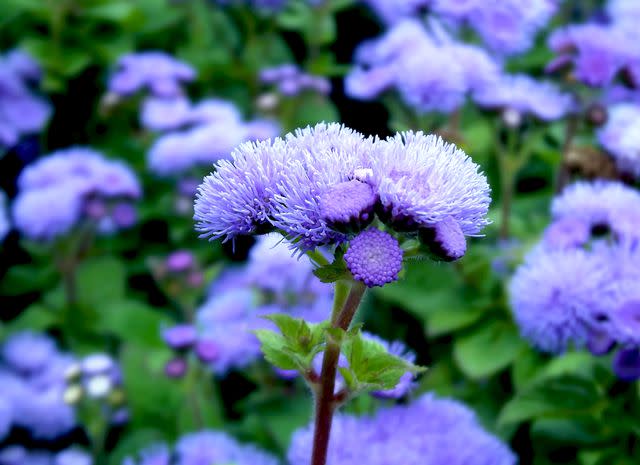
designermetin / Getty Images
A puffy blue to purple flower with a fringed appearance, floss flower (Ageratum) adds a whimsical feel to the garden. The cool-season annual is a repeat bloomer from spring until fall and is often used to fill in and add color to beds.
Zones: 4 to 9
Size: 6 to 12 inches tall x 6 to 12 inches wide
Care requirements: full sun to partial shade; well-draining soil with a neutral to slightly acidic pH
Cosmos
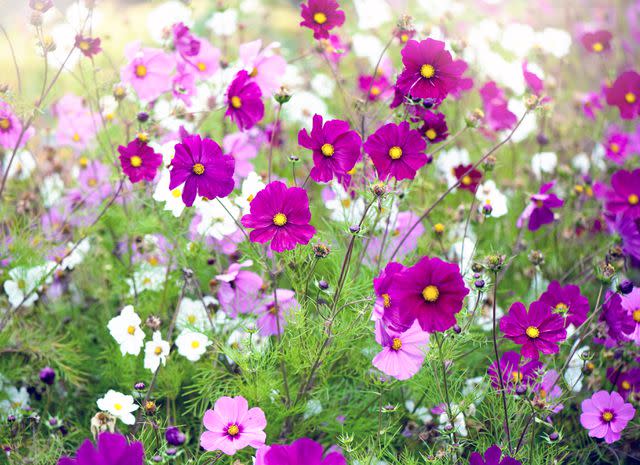
Jacky Parker Photography / Getty Images
Cosmos boast cheerful flowers in a variety of colors, including purple, white, yellow, and orange. "Cosmos are great for attracting pollinators and beneficial insects," says Garlitz. "They are also drought-tolerant once established."
Zones: 2 to 11
Size: 36 to 48 inches tall x 18 to 36 inches wide
Care requirements: full sun; poor to average well-draining soil
Feather Celosia
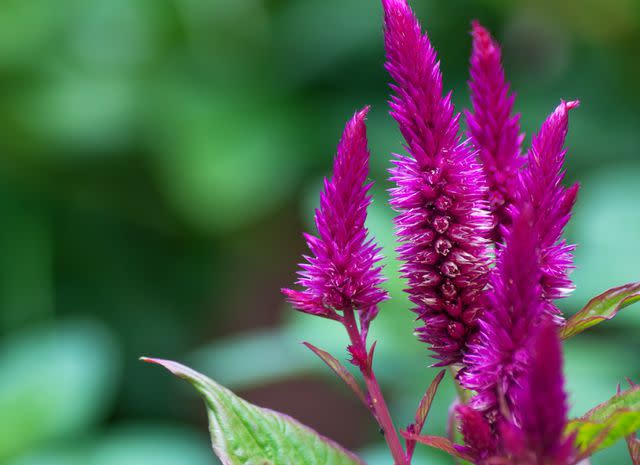
Lusyaya / Getty Images
Feather celosia is a small, feathery-plumed bloom available in red, pink, gold, and peach. "Celosia is fantastic for regions that experience hot summers as it is very heat tolerant," says Garlitz. While deadheading isn't necessary, it may extend the flowering period.
Zones: 10 to 12
Size: 8 to 12 inches tall x 6 to 12 inches wide
Care requirements: full sun; loamy soil that is well-draining
Read the original article on Martha Stewart.

